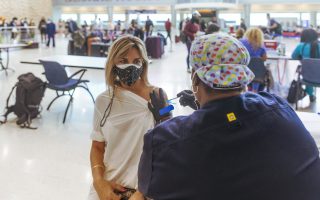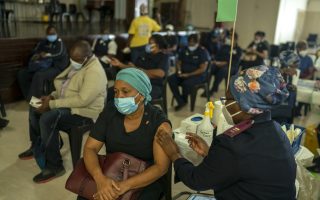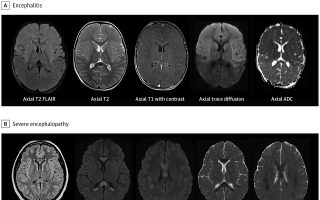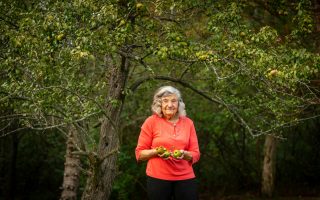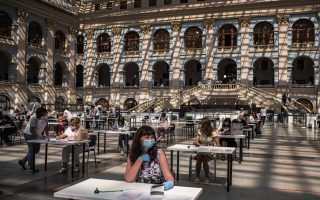Is that sniffle a cold? Or is it Covid-19?
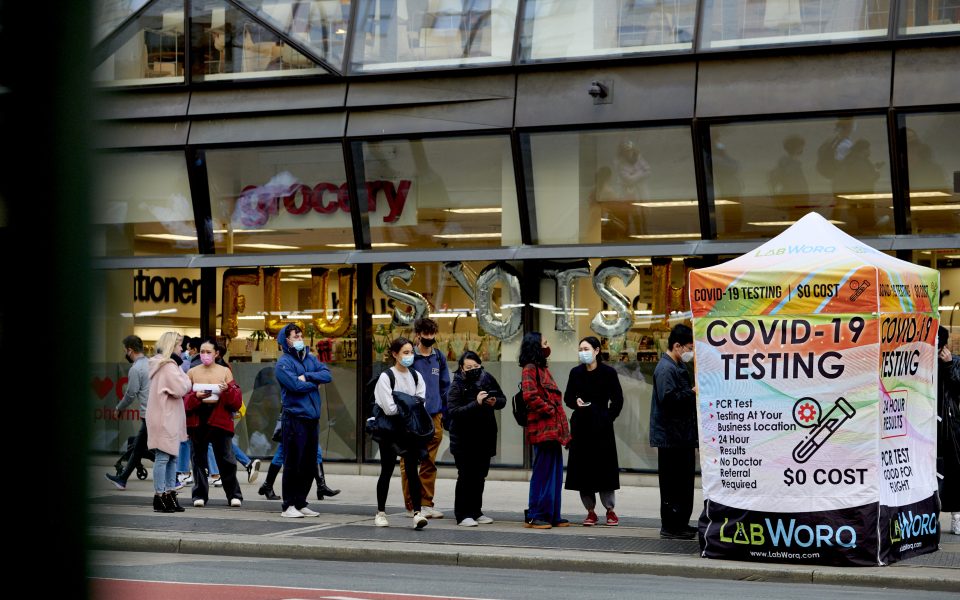
NEW YORK – The symptoms of the common cold are typically a stuffy head, the sniffles and body aches.
Now, this season, there’s a new one: panic.
As the latest coronavirus variant races through recently reopened offices, holiday parties and family gatherings, signs of an ailment that was once an annoying winter perennial eased with bed rest and chicken soup now set minds racing. In New York City, the slightest sniffle has people canceling holiday plans and packing coronavirus testing centers, where in recent days lines have stretched for blocks.
Is it a cold? Or is it Covid-19?
With new information that the highly contagious omicron variant can penetrate two vaccine shots and a booster, it has become emotionally upending to feel under the weather, New Yorkers say.
“Having other ailments in the middle of a pandemic feels almost like an insult,” said Tal Lavin, a 32-year-old author from Manhattan, who has taken three at-home coronavirus tests – all negative – since she came down with an apparent cold earlier this week. “I have thought so much about this disease for the past two years that any potential brush with it feels a bit monumental.”
Many cannot shed overwhelming anxiety in the face of Covid-19, a pathogen that has killed nearly 800,000 Americans – even when tests and retests have shown that they actually have a more mundane illness.
Despite receiving negative tests, some people keep burning through at-home coronavirus swabs just to stay calm. Others with in-the-clear test results and drippy noses say they are still secluding or masking even at home until the sneezing stops – just in case.
The worry is particularly intense because last year, many people had fewer colds and flus: Behavior changes and measures put in place to quell the coronavirus also reduced the prevalence of other bugs. This season, as Zoom social hours and virtual school have been replaced with in-person parties and classrooms, the flu and other bugs are slinking back, according to public health officials.
When vaccination began last winter, there was a bullish belief in the vaccines’ near-total protection that has since given way to a grim new understanding: Wily strains of coronavirus can still break through, though vaccination greatly reduces serious illness.
And now, the virus is newly resurgent.
In the Northeast, and New York state, an epicenter when the coronavirus first made inroads into North America in 2020, the positivity rate tripled in just three days this week. On Sunday, New York state reported 22,478 new coronavirus cases, the highest single-day total since the outset of the pandemic, though testing was not as widely available in the first wave last year. Increasingly widespread vaccinations have helped keep hospitalization rates comparatively low: About 1,100 people are hospitalized in New York City now; at the peak in April of 2020, 15,000 people were hospitalized.
Public health officials nationwide are bracing as cases have begun to creep up in most of the country, even as scientists scramble to understand omicron’s severity, and concern is great about its toll on areas with low vaccination rates.
At the same time garden variety illnesses are on the rise. As social-distancing and masking guidelines and behaviors have relaxed, influenza infections have begun to increase as they usually do this time of year, according to the Centers for Disease Control and Prevention.
As people plan Christmas travel and New Year’s Eve parties, that convergence of illnesses, experts say, means that there is merit to hypervigilance.
Health officials encourage people who are experiencing symptoms and who believe they have been exposed to the virus to get tested and to avoid social activity.
“If it is not Covid, we still don’t want these other viruses spread around,” said Dr. Emily Lutterloh, the director of the Division of Epidemiology at the New York State Department of Health. “It is still prudent to stay home, and the same mitigation measures that will help Covid from spreading are likely to help stop these.”
When Julia Edmunds, 29, from Williamsburg, Brooklyn, who is vaccinated, began to feel run-down this week, she was sure it was a cold. “It is a stressful thing, you don’t want to feel a cold is Covid,” Edmunds said. On Friday she found out it was the coronavirus.
There is a distinction between reasonable fear and anxiety that becomes disproportionate and all-consuming, said Dr. Itai Danovitch, chair of the department of psychiatry and behavioral neurosciences at Cedars-Sinai Hospital in Los Angeles. A meta-analysis of dozens of community-based studies on mental health and the coronavirus showed that anxiety among the general population has increased threefold during the pandemic.
But in such tumultuous times, a certain level of anxiety is understandable, he said.
“It is important to normalize how people are feeling: Anxiety and fear are common, it’s OK to feel anxiety, it’s OK to feel low, it’s OK to feel some distress,” Danovitch said.
Since Rachel McEneny, of Albany, New York, began sniffling last Saturday, she has taken two rapid tests, both negative. Yet when a housekeeper came to her home, McEneny left, afraid to give her the coronavirus in the remote case that both tests had produced a false negative.
As McEneny’s illness dragged on, she was unconvinced by the at-home test results and took a PCR test Thursday. She began wearing a mask when watching television with her teenage daughter.
“You are wearing a mask and you’re hiding from people and you’re absolutely miserable and you’re so worried,” said McEneny, 49, the commissioner of administrative services for Albany, who considered canceling her Christmas dinner plans. Compounding her anxiety, she added, is the stigma of being ill in public.
“The minute I hack, people wince being around you – and I do it too,” she said. “Socially you don’t want to be part of that.” Late Friday evening she got her results back: Her illness was not Covid-19.
For many workers, the rigmarole of sorting out which illness they have – a cold they can handle with Gatorade and NyQuil, or the coronavirus, for which health officials recommend a period of isolation – can translate into lost wages or worry that they are leaving their employers in the lurch.
Brianna Lue, 21, from East New York, Brooklyn, felt obligated to stay home from the day care center where she works and notify everyone she’d come in contact with that she was feeling poorly this week. “You have to tell your boss, you have to tell your family members, you have to tell your significant other,” Lue said. “I don’t have any other word for it than ‘exhausting’.”
On Friday she received a negative test, but the worry had not abated: On a date with her boyfriend in Washington Square Park that evening, she sat scrolling on her phone through a website that purported to show the likelihood of having Covid-19 based on different colors of phlegm.
Parker Burbridge, an artist’s assistant who lives in SoHo, thought the congestion she felt this week was probably nothing to worry about: After all, she was vaccinated and boosted. Still, Friday morning Burbridge got tested, waiting in line for 2 1/2 hours, she said.
“The fear is back, and everybody within a couple days has just completely lost it,” Burbridge said Friday afternoon, adding she was not overly concerned.
Then, 17 minutes later, she sent a text message. “Oh no I just tested positive,” Burbridge wrote. “I take it back!”
[This article originally appeared in The New York Times.]

